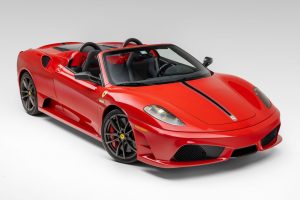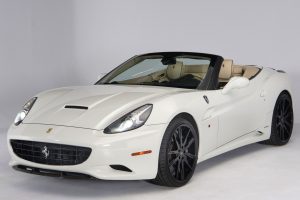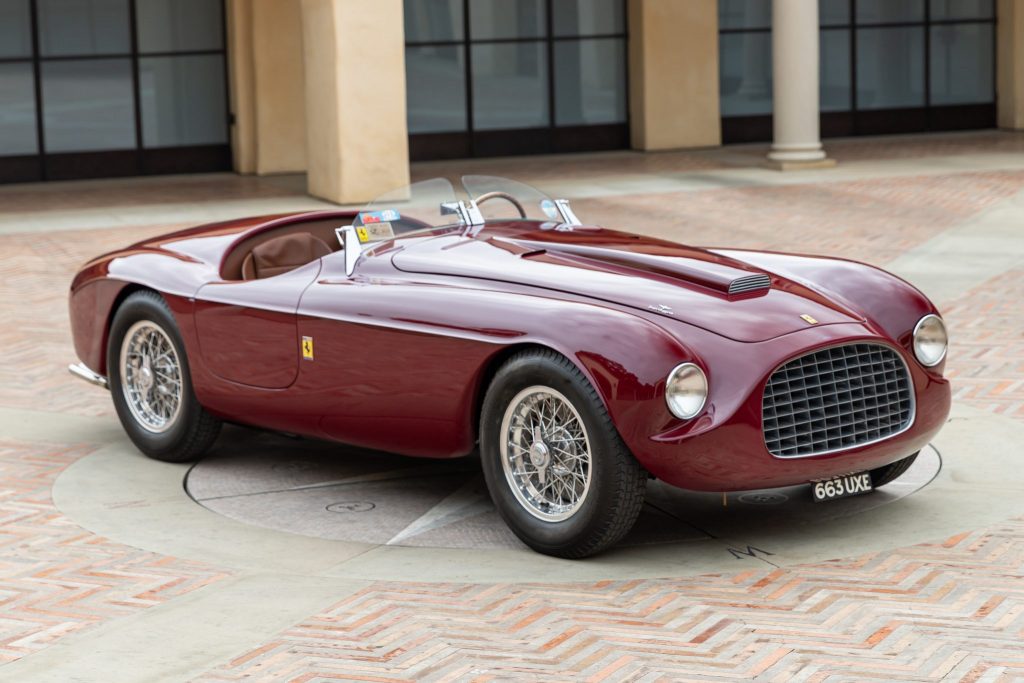
Current Price: USD $285,000 – Source
Auction Ends: Wednesday, October 15 at 10:05am PT
–
This 1952 Ferrari 212 Inter is one of approximately 80 examples built between 1950 and 1953 and began its life as one of 15 Inter chassis clothed in Pinin Farina coupe bodywork. Chassis 0259EU was sold new via Ferrari dealer Renato Nocentini’s Garage La Rotunda in Florence, Italy, and soon after made its way to the US, where it was later fitted with the engine from a 250 GT. In the late 1990s, the car was relocated to the UK, where it was rebodied in the early 2000s by D. Moroney in Cheshire, England, with a hand-built aluminum body replicating that of a Touring barchetta. After an engine overhaul was performed in 2009, the car spent over a decade in the Gene Ponder collection before being purchased by its current owner in 2022. Finished in red, the car is powered by a replacement Colombo V12 that breathes through triple Weber carburetors and is mated to a five-speed manual transmission. Additional features include hydraulic drum brakes, independent front suspension, 15” Borrani wire wheels, and fixed-back bucket seats trimmed in brown leather. This 212 Inter is now offered by the seller on behalf of the current owner in Santa Barbara, California, with a Marcal Massini report, three carburetor rebuild kits, and a clean Montana title that identifies the car as a 1952 Ferrari 212 Barchetta.
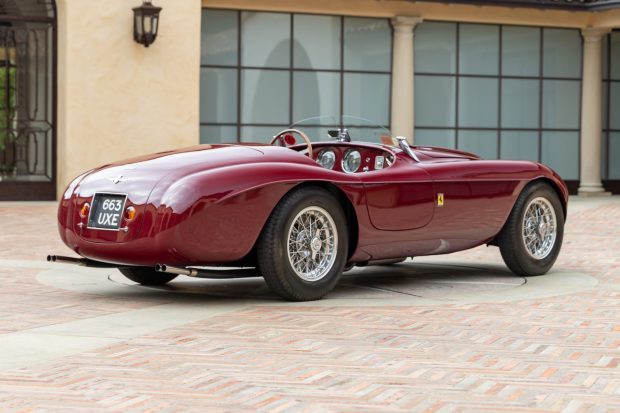
The 212 platform was introduced by Ferrari in 1950 as an evolution of the grand touring platform that included the 166 and 195, and like its predecessors, the 212 was available in both road-going, or Inter, and racing forms. The 212 Inter shared much of its chassis design with the 195 Inter while riding on a wheelbase 100mm longer, and like the 195 was clothed to special order by a range of Italian coachbuilders. In addition to the Inter chassis, 27 examples of the 212 were built on the shorter-wheelbase racing Export version, eight of which were clothed in Superleggera barchetta bodywork by Carrozzeria Touring similar to that worn by most of the 166 Mille Miglia chassis.
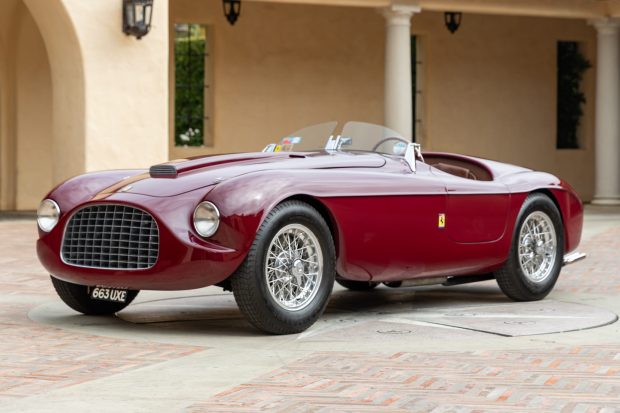
This example’s barchetta-style body was fabricated between 2001 and 2003 with steel tube framework wrapped in aluminum body panels in the style of Touring’s Superleggera construction. The body is finished in red and features an egg-crate grille, a hood scoop flanked by smaller vents, dual windscreens, doors without external handles, NART fender badges, taillights integrated into the trunk panel, and quad exhaust outlets.
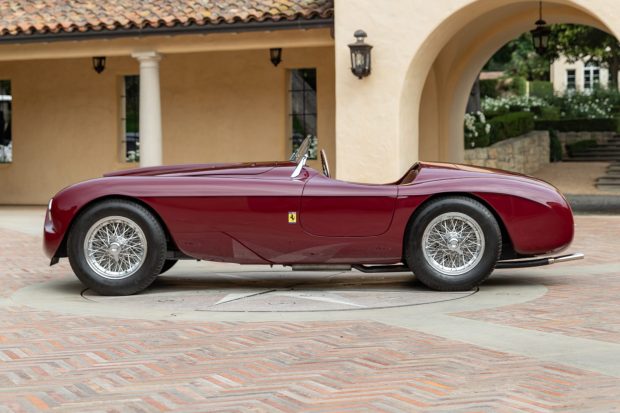
Bright Borrani wire wheels are secured by two-eared knock-offs and are wrapped in 5.50-15 Englebert Competition tires, while a matching spare housed in the trunk wears 6.00-15 Englebert rubber. Stopped is handled by hydraulic drum brakes all around.
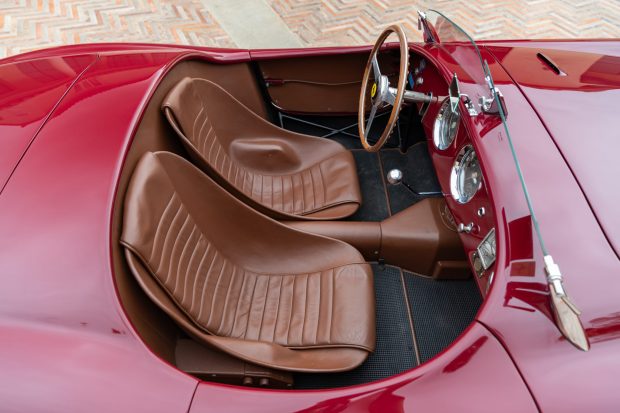
The cockpit houses a pair of fixed-back bucket seats trimmed in brown leather, while color-matched trim covers the door panels, center tunnel, and rear bulkhead. Additional features include black floormats bound in brown, door pull straps, and a polished shift knob with Roman-numeral markings.
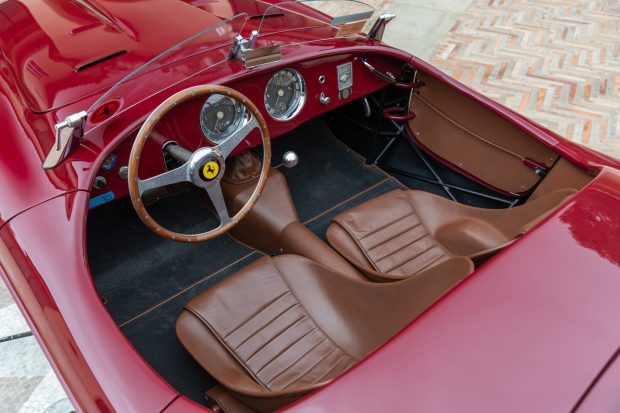
The split-wood-rimmed steering wheel features engine-turned spokes and sits ahead of a body-color dashboard. Jaeger instrumentation includes an 8,500-rpm tachometer with inset gauges monitoring coolant temperature and oil pressure and a 250-km/h speedometer with an inset clock and fuel-level gauge. The five-digit odometer shows 99k kilometers (~62k miles), approximately 100 of which have been added under current ownership. Fitted to the dashboard are a St. Christopher badge and a plaque from the 1994 Pebble Beach Concours d’Elegance.
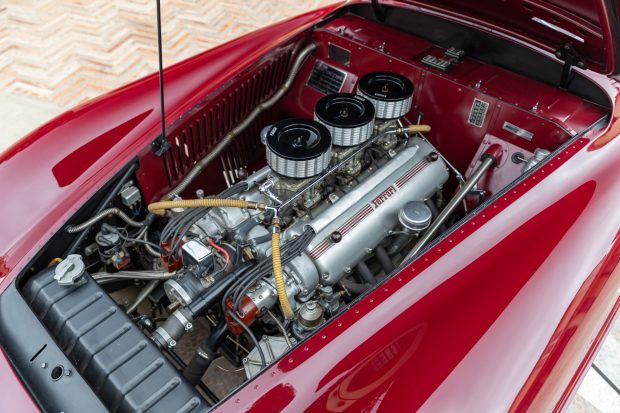
The replacement Colombo V12 is believed to have been sourced from a 250 GT Boano and features triple Weber carburetors, Magneti Marelli ignition with dual coils and distributors, and dual fuel pumps. The engine is said to have been overhauled in 2009, while the carburetors and fuel pumps were rebuilt in 2019.
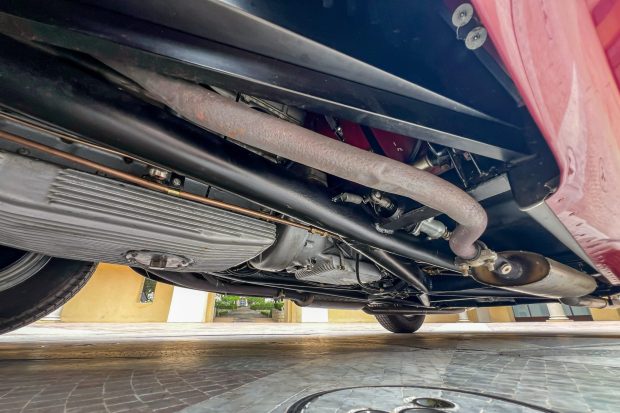
Power is sent to the rear wheels via a five-speed manual transmission. Independent front suspension incorporates double wishbones and a transverse leaf spring, while the solid-axle rear features semi-elliptical leaf springs and an anti-roll bar. Houdaille shock absorbers are utilized at each corner.
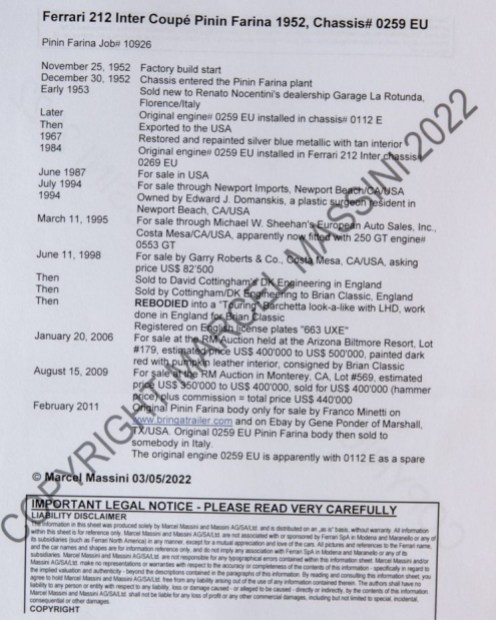
The Marcel Massini report lists a chassis completion date of November 25, 1952, with arrival at Pinin Farina’s factory on December 30, 1952, and also notes the later body conversion. The car’s original Pinin Farina coupe body was sold after its removal and was featured on BaT in May 2011.
